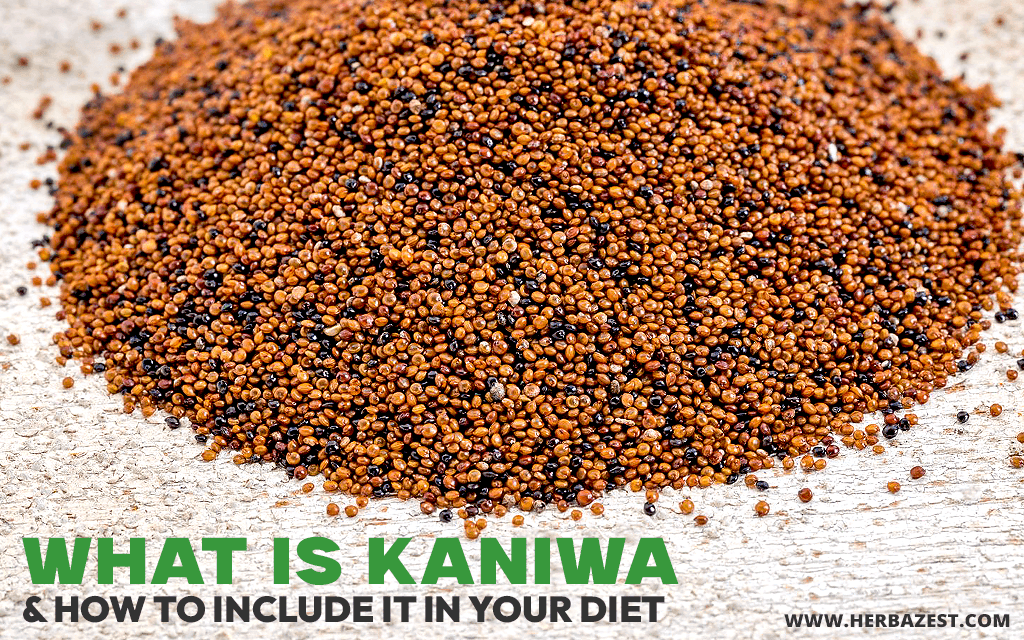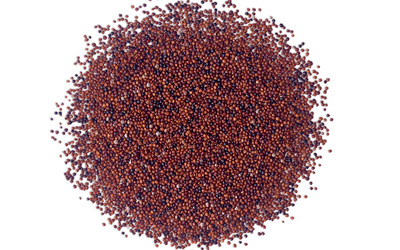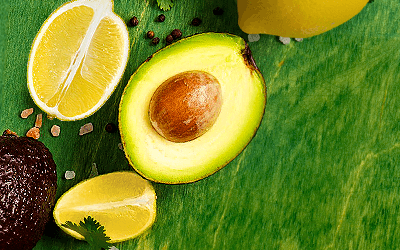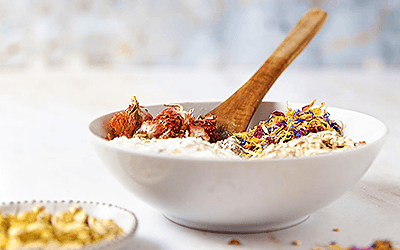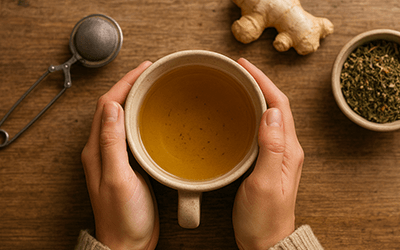As an important part of a balanced diet, whole grains offer many health benefits, such as lowering the risk of diabetes, heart disease, and hypertension.1 They're not only a good source of protein, fiber, and other essential nutrients, but they're also versatile and easy to include in daily meals.
Most people who know about the most common whole grains like quinoa, amaranth, millet, and buckwheat may have not yet heard of the lesser known but equally nutritious grain called kaniwa. Kaniwa is similar to quinoa in many ways, but it has some distinctive features that make it a valuable addition to the everyday diet. Find out what is kaniwa and how to use it to make delicious meals!
About Kaniwa
Native to the Andean regions of Peru and Bolivia, kaniwa has been cultivated for thousands of years by local people. It belongs to the same family as quinoa, with smaller and reddish-brown seeds. Because of this resemblance, it is often called “baby quinoa.”
While it's technically a seed, kaniwa shares many of the characteristics of whole grains and is consumed as such. It is chock-full of essential amino acids (especially lysine), fiber, iron, calcium, and antioxidants. It is gluten-free and has a low glycemic index, which means it does not cause sudden spikes in blood sugar levels.
4 Ways to Add Kaniwa to Everyday Meals
Kaniwa has a nutty, slightly sweet flavor that makes it a great ingredient in many dishes. It can be used in a variety of ways, depending on its presentation. Here are four common forms of kaniwa and how to use them:
1. Cooked Kaniwa Seeds
Unlike white quinoa, kaniwa seeds don't fluff up as much and have a pleasant slight crunch when cooked. They do not contain saponins. So, there's no need for extensive rinsing or soaking. Just toast the seeds for two minutes. Then, cook them in water in a 2:1 ratio for about 20 minutes, until the seeds soften. Enjoy it as a side dish as well as in salads, soups, and stews. Cooked kaniwa is also delicious in breakfast bowls with milk, honey, fruits, and nuts.
2. Kaniwa Flour
Kaniwa is a great option for a gluten-free flour. It has a unique, mildly sweet flavor that can enhance anything from bread and pancakes to cookies, muffins, and cakes. It can also be used to thicken sauces, soups, or gravies. In most recipes, kaniwa flour will work best when mixed with other flours, like those made from oats or almonds. If you want to use it in place of wheat flour, replace up to 25% of the wheat flour required.
3. Kaniwa Flakes
Made by rolling the seeds, kaniwa flakes are a nutritious oat replacement. They maintain the seeds' nutrients with the added benefits of being similar to instant oats in that they are ready within minutes. Most popularly, they are used to make a quick and nutritious kaniwa porridge. They can also be sprinkled over yogurt, smoothie bowls, and fruits salads as well as added to granola, muesli, or cereal bars.
4. Kaniwa Pop
Kaniwa pop is a wonderful way to enjoy the nutritional benefits of this Andean seed. Popped without any oils and other additives, it has a nice neutral flavor and a lovely crunch. Sprinkled over yogurt, a fruit salad, or a smoothie bowl, it can nutritionally elevate your breakfast meals in seconds. Kaniwa pop is also amazing when mixed with melted chocolate and peanut butter in delicious crunchy treats and other wholesome snacks.
If you're looking to bring more variety into your kitchen and load up on whole grains, kaniwa is a great choice. This versatile seed can instantly enhance your meals and snacks with protein, fiber, and other nutrients. Experiment with easy and healthy kaniwa recipes, and see what this supergrain has to offer!
Sources
- Beyond Celiac, Is Kaniwa Gluten-Free?
- Food Reviews International, Nutritional Value and Use of the Andean Crops Quinoa (Chenopodium quinoa) and Kañiwa (Chenopodium pallidicaule), 2006
- Frontiers in Plant Science, The Global Expansion of Quinoa: Trends and Limits, 2016
- Gels, Kaniwa (Chenopodium pallidicaule)’s Nutritional Composition and Its Applicability as an Elder-Friendly Food with Gelling Agents, 2023
- National Research Council, Lost Crops of the Incas: Little-Known Plants of the Andes with Promise for Worldwide Cultivation, 1989
- Neglected Crops: 1492 from a Different Perspective
- Whole Grains Council, Kañiwua
Footnotes:
- Harvard T.H. Chan. (n.d.). Whole Grains. Retrieved November 16, 2023, from https://www.hsph.harvard.edu/nutritionsource/what-should-you-eat/whole-grains/

